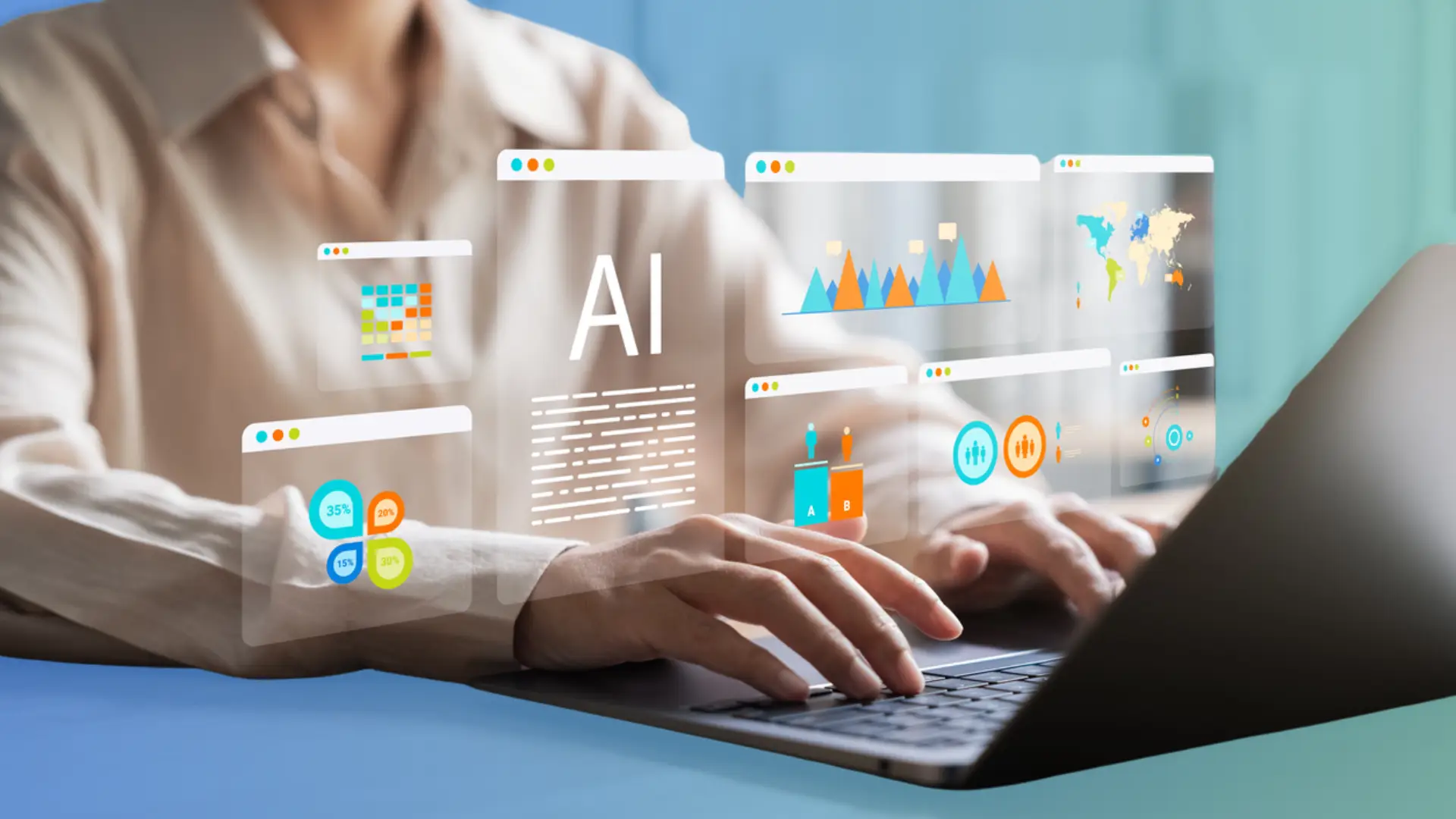Being skeptical of AI in a job built around communication is easy. Like all disruption, AI captioning for events has the potential to completely change the way things are done. It also has the potential to expand access to communication to create more equitable experiences for all.
At Boostlingo, we pride ourselves on providing a cohesive language experience for those who speak another language or communicate using sign language. With translated captions becoming a focus in multilingual communication, whether as a complement to interpretation or a substitute, we see the need for accelerating access to these valuable tools.
AI Captioning is a set of algorithms that captures and converts spoken words into a text stream. AI can then translate and display that text stream alongside interpretation or by itself.
In this post, I’ll share some views on AI in language services and some of the use cases for captions and translated captions. Then, we’ll discuss some challenges and concerns around AI captioning.
AI in Language Services
First, let’s look back at the history of AI in language services, a relationship that spans decades. A major part of this story revolves around Machine Translation (MT), which uses algorithms and AI to automate the translation of text or speech from one language to another.
Consider, for instance, Google Translate. It draws input from a vast database of bilingual text data to translate a user’s written text from one language into another. Other tools, like Microsoft Translator or DeepL, train their input using publicly available texts, licensed content, and user-generated translations. Their sources include books, websites, official translations, and other multilingual resources while encouraging user feedback to improve their systems over time.
In the business world, machine translation plays a critical role. It facilitates communication, enables market access, and extends global reach. The relevance and growth of this technology are apparent, as evidenced by a 42% increase in the MT market in 2022, according to Slator. Businesses value MT providers for their language coverage, quality, availability, deployment methods, and levels of data security.
Machine translation’s allure lies in its benefits: speed, cost-effectiveness, and ease of use. These attributes drive its growth and will continue to shape its future.
Captions: An Option for Accessibility
Typically, when we talk about captioning in virtual events and meetings, it’s a complement to sign interpretation services for people who are deaf or hard-of-hearing and hearing impaired.
If you talk to any of your hard-of-hearing or deaf friends and ask which is more valuable for them to engage in–sign language or captions–they will always reply, “Both.”
In today’s diverse society, we acknowledge that not everyone communicates the same way. Because of this, it has led to a proliferation of captioning as a support and complement to the services that the language services industry has always provided.
Translated Captions: Low-cost Alternative to Interpretation
As captioning and translation technologies have matured, their reliability has led to widespread usage and demand. This development aligns perfectly with the rising emphasis on making communication more inclusive and accessible.
How has that played out? In today’s world, inclusive communication means everyone is part of the conversation. Be it spoken, signed, or otherwise. Translated captions broaden this scope, expanding inclusivity and facilitating multilingual event communication.
While captioning is a young subindustry in the event space, exploring how it could develop is fascinating. At its core, the emphasis should be driving engagement in low-stakes, minimally specialized contexts – such as casual conversations, everyday meetings, or non-technical seminars.
Compare event captioning to the experience of watching a subtitled movie, where the subtitles help with comprehension and promote an inclusive viewing experience. However, it’s important to note that, unlike carefully crafted movie subtitles, real-time captioning at live events might not be as polished due to the contemporaneous nature of captioning. That and the lack of action on screen may mean that there is more room for ambiguity.
AI Captions
First, I have to mention here that, just as it is with interpretation, a human captioner is always your best option. However, translated AI captioning is appropriate and fit for your purpose in specific contexts.
AI captioning is primarily an attractive option because of the lower costs and availability. It’s cost-effective, easy to set up, and an immediately available alternative to human captioning when used in the right context.
What does that mean?
AI captioning may not be the best choice for specialized or technical events, just as machine translation wouldn’t be your go-to option for a legal contract that requires signing.
Regardless, AI captioning will become a significant factor in broadening language access at events and conferences due to its cost, ease of use, and availability. These benefits will enable event and meeting organizers to provide multilingual communication at events that previously would have lacked language services.
Challenges of AI Captioning: Quality, Languages, and Data
While AI captioning looks promising for expanding language access in the event space, the path to realizing this potential isn’t without its hurdles. Key among these challenges is ensuring a high-quality translation and data availability and protection.
First, one of the biggest challenges is ensuring the translation quality. Just like when choosing a human interpreter, you want to ensure that the AI captioning is specialized to specific topics and contexts.
Next, because the quality depends on the available data, captioning will initially be available for the most popular language combinations. In other words, popular languages will have the highest quality initially.
Finally, as a technology company dealing with large volumes of data, data security, and privacy are essential in deploying AI effectively. At Boostlingo Events, we operate on a strict policy of using only data we have explicit permission to use. We never look back on our previous customers’ usage without their consent. Additionally, any data we use is anonymized and aggregated, mitigating the risk of individual user data being traced back. This commitment to data security and privacy reinforces our users’ trust in us.
The Future of AI Captioning at Events
If there’s anything certain about the future, it’s that AI will trigger significant opportunities in the market in the next few years. In the event space, businesses can easily offer multilingual communication through AI captioning without breaking the bank.
As AI captioning unlocks new potential for accessibility at events, it’s crucial to help businesses understand the proper contexts to use AI versus human-led captioning.
It’s also worth noting that AI, by design, constantly evolves and improves. We can anticipate an exponential enhancement in its quality, which will broaden the contexts in which it’s a viable tool for accessibility, inclusion, and equitable event experiences.
While the possibilities of AI captioning at events are exciting and transformative, the foundation of using the best language services and tools for the context isn’t going anywhere.



